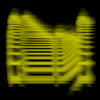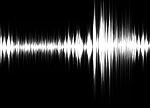| Author
|
Track Structure
|
Kedux
IsraTrance Junior Member
Started Topics :
12
Posts :
32
Posted : Jan 8, 2007 18:07
|
I am now in a position where i preety much built a huge bank of my own sounds of leads baseline and kicks and i can even Mix it all preety good iv been building tracks for quite a while but i got one major problem, i didnt do even one decent track in the past 2 years. i just cant construct them, they never flow. i wanted to know if u guys can give me any tips on how to build a flowing structure for a track, do u follow any formula or is it something i just gotta keep working on till i get it? thx  |

|
|
Colin OOOD
Moderator

Started Topics :
95
Posts :
5380
Posted : Jan 8, 2007 18:41
|
Although it doesn't always happen like this, my/our track-writing tends to happen in two stages. The first is where we build up a 16-bar loop representing the first climax of the track; when we've done this we ask ourselves "how do we get to this point from silence?", and spread the elements of the loop backwards so that the track builds up from just a few elements to that semi-climactic point over say a couple of minutes. At this point we'll do the intro.
After that, it's a case of constantly asking "what does the track want to do next?"
        Mastering - http://mastering.OOOD.net :: www.is.gd/mastering Mastering - http://mastering.OOOD.net :: www.is.gd/mastering
OOOD 5th album 'You Think You Are' - www.is.gd/tobuyoood :: www.OOOD.net
www.facebook.com/OOOD.music :: www.soundcloud.com/oood
Contact for bookings/mastering - colin@oood.net |

|
|
Milosh
IsraTrance Junior Member

Started Topics :
27
Posts :
204
Posted : Jan 8, 2007 19:00
|
Yo Colin don`t know why but this post make me laugh in positiv way...
"we build up a 16-bar loop representing the first climax of the track; when we've done this we ask ourselves "how do we get to this point from silence?" This can be very tricky question, but I am glad that I am not the only one who use this method.
        Never let computers to win a game! :) Never let computers to win a game! :)
-------------------------------------------- |

|
|
Kaz
IsraTrance Full Member

Started Topics :
90
Posts :
2268
Posted : Jan 8, 2007 19:08
|
Adunno. I start structuring a track before I have all the elements for a peak. You build a track in a certain way and adding a single element to tie things together tends to be much simpler than structuring towards something preplanned. Music should be a spontaneous creation, not a formula with preprojected results. Hell, lately, I've started structuring a track before I even selected the kick and bass for it. Guess what? It's much more atmospheric than most ones I've made in other ways.
Main question is "what'd sound cool now?" - as long as you just keep answering that your track will be cool. And you get a bigger chance to surprise yourself that way, much more points for fun in the creation process.        http://www.myspace.com/Hooloovoo222 http://www.myspace.com/Hooloovoo222 |

|
|
Milosh
IsraTrance Junior Member

Started Topics :
27
Posts :
204
Posted : Jan 8, 2007 19:26
|
Quote:
|
On 2007-01-08 19:08, kaz wrote:
Hell, lately, I've started structuring a track before I even selected the kick and bass for it. Guess what? It's much more atmospheric than most ones I've made in other ways. |
|
Well kick and bass makes a most trouble and takeing a lot of time to people trying to sync them together and because that it`s a starting point for most people. IMO making a small beat or perc. loop on first place is very useful overview of beat and groove
        Never let computers to win a game! :) Never let computers to win a game! :)
-------------------------------------------- |

|
|
Saf

Started Topics :
5
Posts :
210
Posted : Jan 9, 2007 05:43
|
I got better at flow and structure by a method that might sound cheap, but I don't care.
You wanna learn how to do something, emulate something you like. So... grab some other artist's track you think is cool, figure out the BPM and drop it into Cubase in an audio track, and set the BPM the same.
Chances are high they use 32 beat phrases, so create an empty midi part with no instrument which is 8 bars long and copy it over and over along the length of the track. This is not for music, only for measurement. This really reveals the structure of the track once you've lined it up properly with the audio track. You're trying to line it up with the first bit of kick drum after the intro.
You will notice it probably doesn't measure out perfect during breaks, so just line it up again after the break.
Seriously every track I've done this to so far lines up on 32 beat phrases perfectly, but that's how most trance is I guess.
Now to the point. Copy the kicks, snare pattern, hats, cymbals/crash, reverse drum hits etc, using your own samples. Create whatever bassline you feel like...
Notice how whoever's track you're studying adds and removes sounds, create some sounds and try something similar at the same points. Do whatever you want fuck with it.
***This is not really for making your own music, this is for learning.***
It's much more effective way to learn how things are structured than just listening. It's almost like you're getting advice from that producer, slowed down, step by step.
Copying is unoriginal and lame for sure, but emulation is how people learn at first.
Do this a few times, and there is almost no way that you're skills won't improve. |

|
|
SecretHero
Started Topics :
9
Posts :
47
Posted : Jan 9, 2007 07:07
|
Quote:
|
On 2007-01-09 05:43, Saf wrote:
I got better at flow and structure by a method that might sound cheap, but I don't care.
You wanna learn how to do something, emulate something you like. So... grab some other artist's track you think is cool, figure out the BPM and drop it into Cubase in an audio track, and set the BPM the same.
Chances are high they use 32 beat phrases, so create an empty midi part with no instrument which is 8 bars long and copy it over and over along the length of the track. This is not for music, only for measurement. This really reveals the structure of the track once you've lined it up properly with the audio track. You're trying to line it up with the first bit of kick drum after the intro.
You will notice it probably doesn't measure out perfect during breaks, so just line it up again after the break.
Seriously every track I've done this to so far lines up on 32 beat phrases perfectly, but that's how most trance is I guess.
Now to the point. Copy the kicks, snare pattern, hats, cymbals/crash, reverse drum hits etc, using your own samples. Create whatever bassline you feel like...
Notice how whoever's track you're studying adds and removes sounds, create some sounds and try something similar at the same points. Do whatever you want fuck with it.
***This is not really for making your own music, this is for learning.***
It's much more effective way to learn how things are structured than just listening. It's almost like you're getting advice from that producer, slowed down, step by step.
Copying is unoriginal and lame for sure, but emulation is how people learn at first.
Do this a few times, and there is almost no way that you're skills won't improve.
|
|
Hey Saf,
Thats a good trick and what I've been doing in the process of structuring.
|

|
|
Djones
IsraTrance Senior Member

Started Topics :
267
Posts :
1766
Posted : Jan 9, 2007 09:56
|
Quote:
|
On 2007-01-09 07:07, SecretHero wrote:
Quote:
|
On 2007-01-09 05:43, Saf wrote:
I got better at flow and structure by a method that might sound cheap, but I don't care.
You wanna learn how to do something, emulate something you like. So... grab some other artist's track you think is cool, figure out the BPM and drop it into Cubase in an audio track, and set the BPM the same.
Chances are high they use 32 beat phrases, so create an empty midi part with no instrument which is 8 bars long and copy it over and over along the length of the track. This is not for music, only for measurement. This really reveals the structure of the track once you've lined it up properly with the audio track. You're trying to line it up with the first bit of kick drum after the intro.
You will notice it probably doesn't measure out perfect during breaks, so just line it up again after the break.
Seriously every track I've done this to so far lines up on 32 beat phrases perfectly, but that's how most trance is I guess.
Now to the point. Copy the kicks, snare pattern, hats, cymbals/crash, reverse drum hits etc, using your own samples. Create whatever bassline you feel like...
Notice how whoever's track you're studying adds and removes sounds, create some sounds and try something similar at the same points. Do whatever you want fuck with it.
***This is not really for making your own music, this is for learning.***
It's much more effective way to learn how things are structured than just listening. It's almost like you're getting advice from that producer, slowed down, step by step.
Copying is unoriginal and lame for sure, but emulation is how people learn at first.
Do this a few times, and there is almost no way that you're skills won't improve.
|
|
Hey Saf,
Thats a good trick and what I've been doing in the process of structuring.
|
|
I've tried this to, but I'm to lazy.
Any tips against lazyness? |

|
|
Saf

Started Topics :
5
Posts :
210
Posted : Jan 9, 2007 10:52
|
Quote:
|
I've tried this to, but I'm to lazy.
Any tips against lazyness?
|
|
Yeah I can't remember the name of the VST for removing laziness... use the search.
It started with C... Coffee something... |

|
|
Raoul V
IsraTrance Junior Member

Started Topics :
26
Posts :
583
Posted : Jan 9, 2007 10:55
|
Quote:
|
On 2007-01-09 09:56, Djones wrote:
Quote:
|
On 2007-01-09 07:07, SecretHero wrote:
Quote:
|
On 2007-01-09 05:43, Saf wrote:
I got better at flow and structure by a method that might sound cheap, but I don't care.
You wanna learn how to do something, emulate something you like. So... grab some other artist's track you think is cool, figure out the BPM and drop it into Cubase in an audio track, and set the BPM the same.
Chances are high they use 32 beat phrases, so create an empty midi part with no instrument which is 8 bars long and copy it over and over along the length of the track. This is not for music, only for measurement. This really reveals the structure of the track once you've lined it up properly with the audio track. You're trying to line it up with the first bit of kick drum after the intro.
You will notice it probably doesn't measure out perfect during breaks, so just line it up again after the break.
Seriously every track I've done this to so far lines up on 32 beat phrases perfectly, but that's how most trance is I guess.
Now to the point. Copy the kicks, snare pattern, hats, cymbals/crash, reverse drum hits etc, using your own samples. Create whatever bassline you feel like...
Notice how whoever's track you're studying adds and removes sounds, create some sounds and try something similar at the same points. Do whatever you want fuck with it.
***This is not really for making your own music, this is for learning.***
It's much more effective way to learn how things are structured than just listening. It's almost like you're getting advice from that producer, slowed down, step by step.
Copying is unoriginal and lame for sure, but emulation is how people learn at first.
Do this a few times, and there is almost no way that you're skills won't improve.
|
|
Hey Saf,
Thats a good trick and what I've been doing in the process of structuring.
|
|
I've tried this to, but I'm to lazy.
Any tips against lazyness?
|
|
smoke less!! |

|
|
organix
IsraTrance Full Member

Started Topics :
77
Posts :
136
Posted : Jan 9, 2007 11:08
|
I usually start with kick and bass, then go from there with some drum samples... then things come together (usually) then fill in the track...
my friend nystagmus does an entire drum track first with no bass or leads, then fills in the blanks...
Eskimo writes bars at a time... and puts the song together with loops...
I think you should find your own way... I struggled for quite a while, then one day things started to click...
probably not the advice you're looking for...
if you're extremely lazy, look for some midi files of some psytrance tracks, and give them your own twist...
dj'ing has helped me... when you've listened to tonnes of the music, you kinda start knowing where things go... like hmmm... that should be a breakdown or a roll...
so I guess,
try using midi files to start...
and listen to as much psy as you can...
dj'ing, and dancing helps... you kinda know where to jump when you're dancing to it... I usually go outside and go on the lawn or the porch with some wireless headphones to listen to the track I'm working on... sometimes a new perspective helps... I find myself usually running back in the studio pretty quick to add a change or a buildup or a new synth or something...
it will click eventually...
wish there were a formula, but the formula would be changing every day or so with the new formula... psy isn't very static...
one word of advice... always save your best part of your track til last... otherwise it's all downhill after that... that's one part of a formula you can't really change...
hope that helps...
Aya (Geomagnetic) |

|
|
MedicineMan

Started Topics :
3
Posts :
19
Posted : Jan 10, 2007 01:13
|
|
This has definately been some valuable information to me. i've been kinda stuck there, and didn't wanna just become another looper. if you know what i mean? |

|
|
tokolosxi
IsraTrance Junior Member

Started Topics :
15
Posts :
117
Posted : Jan 10, 2007 05:25
|
|
Just make sure you know the very basic 'rules' of dance music...if you dj , this shouldn't be a problem at all...then imagine you're at your favorite party while your favorite artist is playing and you're on the dancefloor.....what do you want to hear,when would you put in the breaks ,build ups , peaks etc etc.....there is no 'right' or 'wrong' structure......it's all about which journey YOU want to take people on. |

|
|
soulfood
IsraTrance Junior Member

Started Topics :
10
Posts :
875
Posted : Jan 10, 2007 06:33
|
Ah the age old structure question. To me the difference between letting the track flow and forcing it to do something is to start off with what I call "the concept".
This is very important and once you have the grasp of this idea you change from being the builder who wants to build without reason because he likes to build things... and the builder who designed and created a bridge so the locals could get across the river, without getting wet.
Imagine your audience, mine when I am creating music being myself, just standing there. If you are your own audience, you should have a damn good idea of what your audience wants to hear. Now a track has to have some positive effect on its listener, otherwise it isnt worth while. Now the obvious and foremost outcome of a track, be it folk, rock, ambient or sea shanty's is the mood it creates to it's listener. Once you have a good idea of the mood you wish to create, this will point you in a good direction for note choice, sounds, tempo, groove and so on. If everything you create points to the same sort of mood and energy, you should by now have a definitive "Sound world". Once a suitable sound world has been created (be it a robotic, screamy, scratchy, atmospheric or what not) before you copy and paste what you have over and over, think about the physics of your sound world. How does it act? Is it erratic and jolty, is it soft teaser or is it all squelchy and bounce? What would I do if I was it? I suppose I could do many things... I'll tell you what! I'll do them all and then pick the best one (roughly of course, as inspiration only strikes once). Now I always go for 2 options when it comes to sketching. Do I let the melody dictate the sounds or do I let the sounds dictate the melody? Heck, one always seems to inspire the other. I usually end up sketching lines of sound, usually in the vein of some strange being that takes it in turns to talk with its many heads, so they are all pulling towards the same direction but in different voices. By this time I may hear one or two notes in my head. Now do I insert a huge riffy motif or do I place a lone note in the background, just to add the slightest hint of emotion?
That should have gotten me past my first main section. I'd also like to note that I never do an intro til I've finished a track due to the fact sounds I make later on may work well as a sneak preview in the begining, or sometimes a melody can come out of nowhere and requires prior relevance.
Once you have something built up ask yourself, do I want to go crazy or do I want to take it a little deeper so my audience will be more hooked on the groove when I go crazy in a little while. Maybe I won't go crazy at all? Maybe a meditive thing is what this sound world is all about?
Well I could go on forever with all the schizo-questionairreing, but above all once you step onto the pavement, have a vague idea of what it is you are walking to and what goodies you want to pick up on the way to make your destination all the more enjoyable. Keep listening back to what you have all in one go and when you get to the end, try to keep the track going in your head. This is also good practice for creating sounds from your mind, rather than just messing with the synth until something comes out. Once you start thinking in sounds the whole process becomes much less painful. I also advise against making sounds before you start as you end up trying to make them fit, rather than designing a sound for a specific purpose.
Anyways thats a heck of a lot to read! I hope it at least makes sense as I still very much consider myself to be a beginner in all this crazy stuff. Just remember that you are making these tunes because psy trance isnt performing to its full potential. You've heard the music and it's kinda cool, but it can do so much more, as either tools to make the world stomp its feet that little bit harder, or as an aid for the perfect psychedelic experience.
I perfer the latter  |

|
|
Milosh
IsraTrance Junior Member

Started Topics :
27
Posts :
204
Posted : Jan 10, 2007 09:05
|
Also try paper and pen trick. Draw your songs.
|-----0:35---|----0:30---|
INtro main drums etc.
Intro 0:35
|--- slow pad--|---Rev. kick--|
0:34 0.34
Some time it`s realy helps
        Never let computers to win a game! :) Never let computers to win a game! :)
-------------------------------------------- |

|
|
|